Sumit A. Raurale
Tracé alternant detector for grading hypoxic-ischemic encephalopathy in neonatal EEG
May 31, 2021

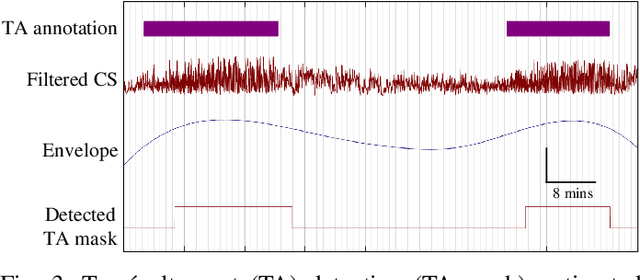
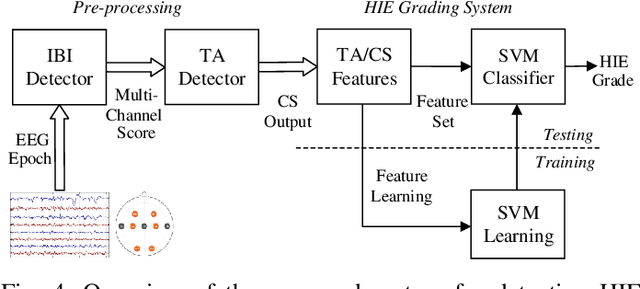
Abstract:Electroencephalography (EEG) is an important clinical tool to capture sleep-wake cycling. It can also be used for grading injury, known as hypoxic-ischaemic encephalopathy(HIE), caused by lack of oxygen or blood to the brain during birth. Trac\'e alternant (TA) is a distinctive component of normal quiet sleep which consists of alternating periods of high-voltage activity (bursts) separated by lower-voltage activity (inter-bursts). This study presents an automated method to grade the severity of injury in HIE, using an automated method to first detect activity. The TA detector uses the output of an existing method to detect inter-bursts. Features are extracted from a processed output and then combined in a support vector machine (SVM). Next, we develop an HIE grading system using the TA detector by combining different features from the temporal organisation of the detected TA mask, again using an SVM. Training and testing for both models use a leave-one-baby-out cross-validation procedure, with model hyper-parameters selected from nested cross validations. The TA detector, tested on EEG from 71 healthy term neonates, has an accuracy of 79.1% (Cohen's \k{appa}=0.55). the grading system, tested on EEG from 54 term neonates in intensive care, has an accuracy of 81.5% (\k{appa}=0.74). These results validate how detecting the presence or absence of TA can be used to quantify the grade of HIE injury in neonatal EEG and open up the possibility of a clinically-meaningful grading system.
Grading the severity of hypoxic-ischemic encephalopathy in newborn EEG using a convolutional neural network
May 12, 2020
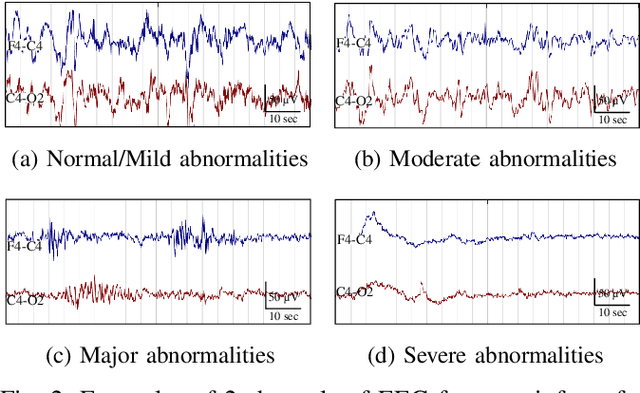
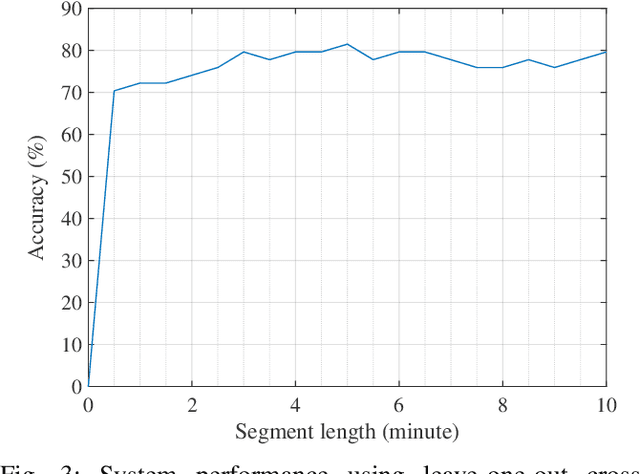
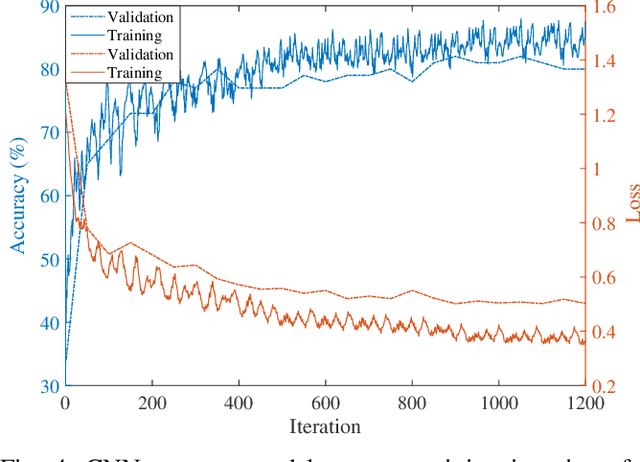
Abstract:Electroencephalography (EEG) is a valuable clinical tool for grading injury caused by lack of blood and oxygen to the brain during birth. This study presents a novel end-to-end architecture, using a deep convolutional neural network, that learns hierarchical representations within raw EEG data. The system classifies 4 grades of hypoxic-ischemic encephalopathy and is evaluated on a multi-channel EEG dataset of 63 hours from 54 newborns. The proposed method achieves a testing accuracy of 79.6% with one-step voting and 81.5% with two-step voting. These results show how a feature-free approach can be used to classify different grades of injury in newborn EEG with comparable accuracy to existing feature-based systems. Automated grading of newborn background EEG could help with the early identification of those infants in need of interventional therapies such as hypothermia.
Identifying trace alternant activity in neonatal EEG using an inter-burst detection approach
May 12, 2020

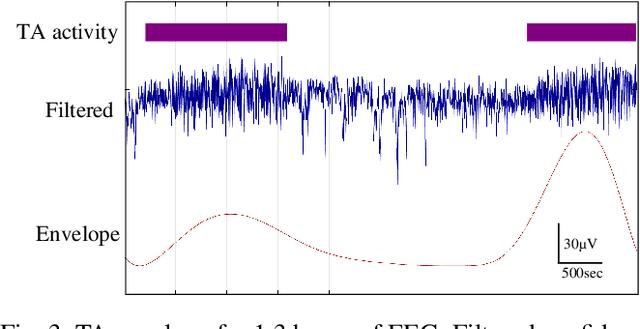
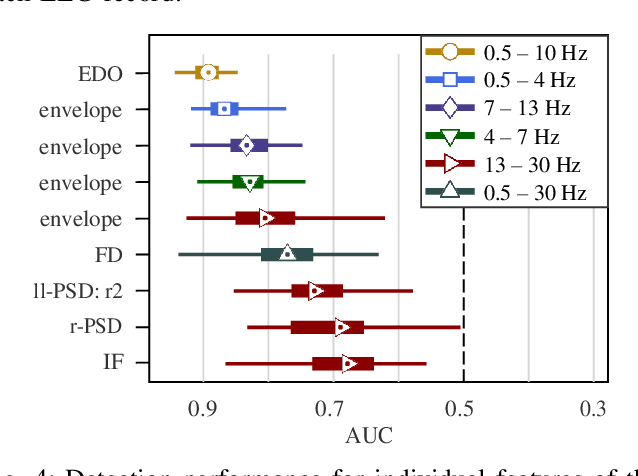
Abstract:Electroencephalography (EEG) is an important clinical tool for reviewing sleep-wake cycling in neonates in intensive care. Trace alternant (TA)-a characteristic pattern of EEG activity during quiet sleep in term neonates-is defined by alternating periods of short-duration, high-voltage activity (bursts) separated by lower-voltage activity (inter-bursts). This study presents a novel approach for detecting TA activity by first detecting the inter-bursts and then processing the temporal map of the bursts and inter-bursts. EEG recordings from 72 healthy term neonates were used to develop and evaluate performance of 1) an inter-burst detection method which is then used for 2) detection of TA activity. First, multiple amplitude and spectral features were combined using a support vector machine (SVM) to classify bursts from inter-bursts within TA activity, resulting in a median area under the operating characteristic curve (AUC) of 0.95 (95% confidence interval, CI: 0.93 to 0.98). Second, post-processing of the continuous SVM output, the confidence score, was used to produce a TA envelope. This envelope was used to detect TA activity within the continuous EEG with a median AUC of 0.84 (95% CI: 0.80 to 0.88). These results validate how an inter-burst detection approach combined with post processing can be used to classify TA activity. Detecting the presence or absence of TA will help quantify disruption of the clinically important sleep-wake cycle.
Suitability of an inter-burst detection method for grading hypoxic-ischemic encephalopathy in newborn EEG
Jul 05, 2019
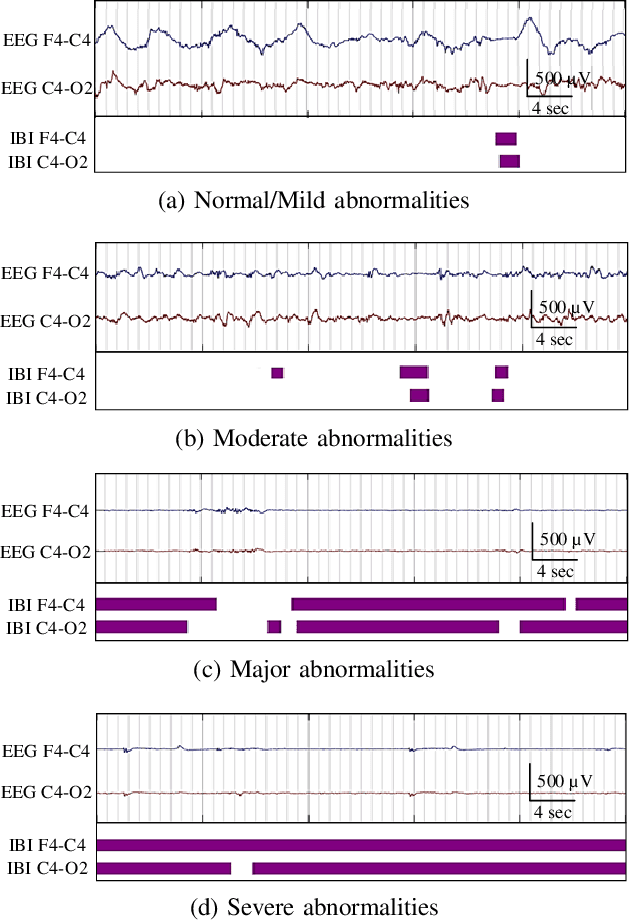
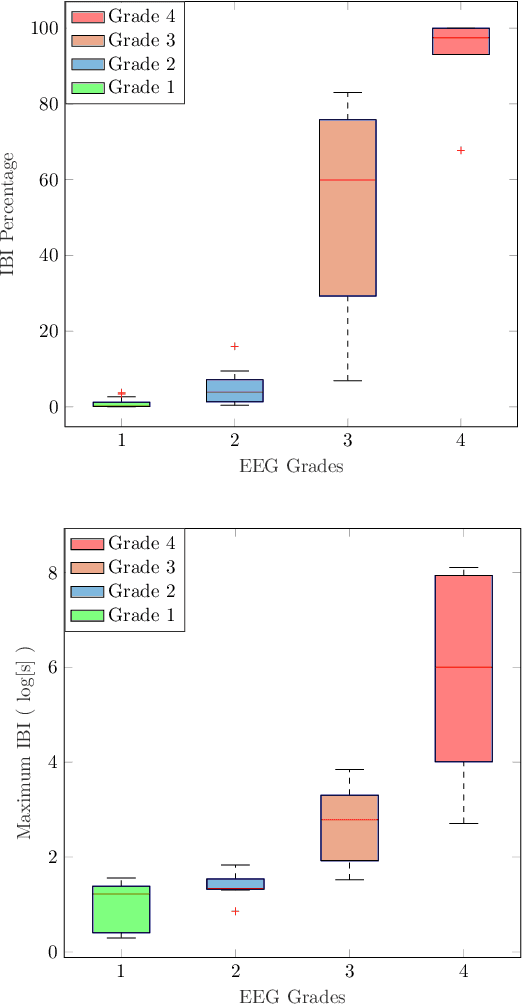
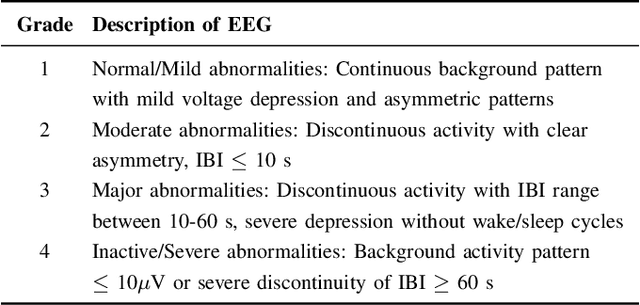
Abstract:Electroencephalography (EEG) is an important clinical tool for grading injury caused by lack of oxygen or blood to the brain during birth. Characteristics of low-voltage waveforms, known as inter-bursts, are related to different grades of injury. This study assesses the suitability of an existing inter-burst detection method, developed from preterm infants born <30 weeks of gestational age, to detect inter-bursts in term infants. Different features from the temporal organisation of the inter-bursts are combined using a multi-layer perceptron (MLP) machine learning algorithm to classify four grades of injury in the EEG. We find that the best performing feature, percentage of inter-bursts, has an accuracy of 59.3%. Combining this with the maximum duration of inter-bursts in the MLP produces a testing accuracy of 77.8%, with similar performance to existing multi-feature methods. These results validate the use of the preterm detection method in term EEG and show how simple measures of the inter-burst interval can be used to classify different grades of injury.
 Add to Chrome
Add to Chrome Add to Firefox
Add to Firefox Add to Edge
Add to Edge